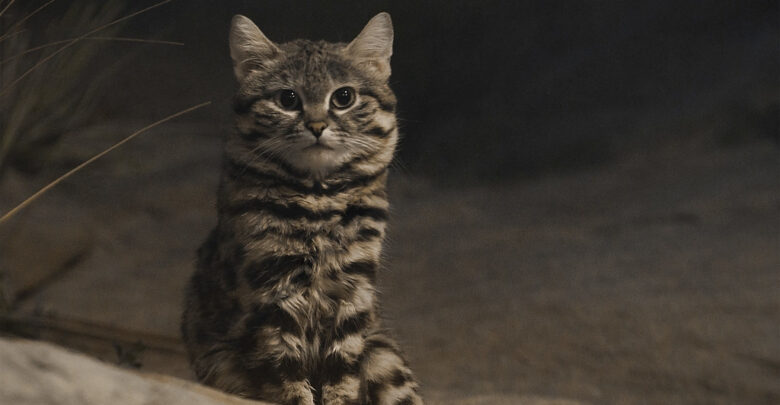Black Footed Cat Africa – The World’s Smallest and Deadliest Wild Cat Species

Despite having a superficial resemblance to our domestic moggies, little cats like the margay and black-footed cat do not make ideal pets.
Is a black-footed cat rare?
Black footed cat Africa are naturally uncommon, however, they are a little more prevalent in some regions of South Africa. They are the most elusive and solitary species of African cat.
They are, in part, little researched in the wild as a result, and the state of their natural population is unknown.
Black Footed Cat Facts

1. The deadliest cat in the world is said to be this member of the species Felis, despite its more cuddly appearance.
With 60% of hunts ending in success, they have the greatest kill rate. Lions and leopards, along with other wild cats, seldom succeed more than 20% of the time.
2. This little feline could be the tiniest wild cat species in Africa. Its body spans a distance of 50 to 72 cm (including the tail).
While the female is just 1-1.6 kg, the male weighs between 1.7 and 2.4 kg. When birth, kittens weigh just 60–90 g.
3. The black footed cat Africa is an opportunistic predator who grabs everything it can outmuscle. It may travel more than 35 kilometers each night at times in search of prey. Males can even kill little bustards or hares.
4. Both sexes of the black-footed cat mark their territory by peeing, and they are solitary animals.
5. Unlike other wild cats, whose skin is often dark brown to black, these adorable cats have pink skin.
More Facts
6. Thanks to its big eyes, the black footed cat Africa has eyesight that is six times as good as that of humans. Additionally, it has superb night vision and unmatched hearing that can pick up even the slightest sound.
7. The cat’s feet are only black on the pads and undersides, despite its name. In the southern regions of Africa, coat coloration ranges from reddish-fawn to a considerably lighter shade further north.
With pronounced dark stripes on the neck and a black-tipped tail, the chin and throat are white. It is much easier to distinguish it from an African wildcat thanks to this description.
8. The black footed cat Africa may be found in portions of southern and central southern Africa. It prefers open habitats near rocky outcrops, dry to semi-arid scrub, and short grassland.
9. This magnificent predator is primarily nocturnal, although occasionally it emerges from its cave shortly after dusk and just before dawn.
They take naps throughout the day in termite mounds with hollow interiors, among rock tumbles, or in burrows created by other species. Its Afrikaans name, miershooptier, which translates to “anthill tiger,” comes from this.
Black Footed Cat compared to House Cat
The black-footed cat, a native of the grasslands of southern Africa, is tiny even by domestic cat standards and has an endearingly round face. Its body is light brown with black spots.
The wild cat is only between 14 and 20 inches (36 to 52 centimeters) in length, 8 inches (20 cm) tall, and between 2 and 6 pounds in weight.
Conservation
Numerous man-made dangers exist for the black footed cat Africa. Overgrazing by cattle is widespread across its range, which results in a depleted population of prey.
Caracals and jackals are affected by the indiscriminate poisoning of corpses to kill them since tiny cats readily scavenge.
Another significant risk comes from cats eating poisoned locusts. Dogs that are deployed to hunt or dig out jackals during problem animal operations prey on cats.
Outside of their natural habitat, these desert inhabitants are challenged to keep in captivity. They have highly specialized habitat needs and must be maintained in dry environments.
The majority of the captive population is present at the Wuppertal Zoo in Germany, which has had remarkable breeding success.
More detailed distributional investigations, notably in Namibia and Botswana, are among the recommended conservation efforts.





